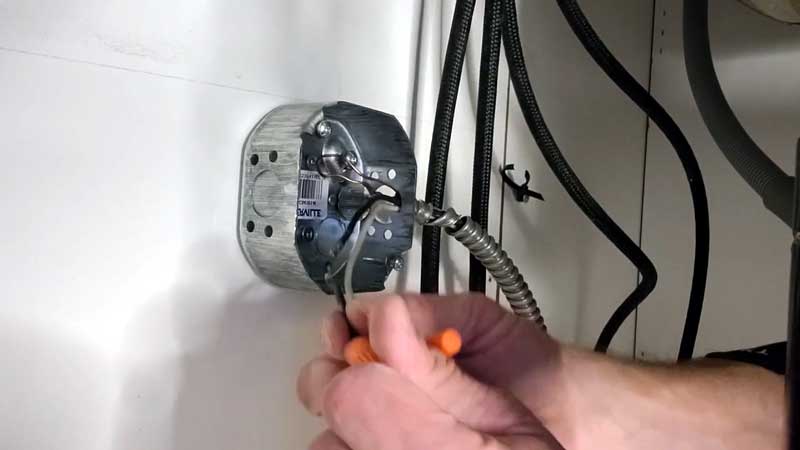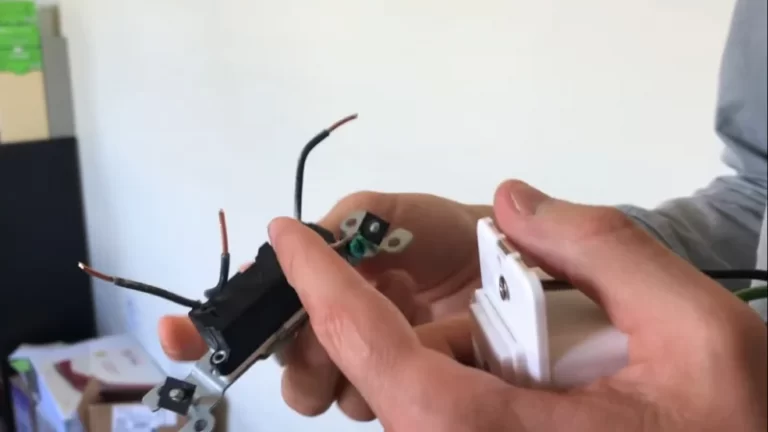Does a Junction Box Need a Ground?

A junction box is the smallest box in which you place your electrical device, it is like a small closet. The box is where you plug your electrical device into the wiring system. If you are not using the junction box correctly, you may cause a safety hazard or your electrical device will fail to operate properly.
Chances are if you already have a metal junction box installed, it meets all current code requirements and doesn’t require any additional grounding measures – unless specified differently by the NEC. A metal junction box does not need to be directly grounded by the NEC, but it is recommended that they have a ground connection.
If a metal junction box does not have a ground connection, there is an increased risk of electrical shock in your home. A metal junction box will also need proper ventilation and fire protection in order to meet code requirements. Make sure you know what type of wire your existing wiring uses so you can properly install the new junction box without conflict or damage to your home’s systems.
You'll Learn About
What is Grounding and Why We Need It?
The junction box is a metal box that holds connections between wires. They are often used to connect things like the battery to the starter motor, the alternator to the starter, and the lights to the battery. It’s also used to connect the car’s starter motor to the engine’s ignition system.
- The function of the ground is to provide a means of transferring stray electricity from one part of the circuit to another part. This is done by attaching a ground wire to the part of the circuit that handles the electricity. The ground wire then connects to the next part of the circuit where the electricity will be dissipated.
- The ground wire must be connected to a solid part of the vehicle, such as the frame or firewall.
- When used properly, a ground wire will protect the parts of the circuit that are connected to it from unwanted electrical current.
- A ground wire is essentially the same as a ground fault circuit interrupter (GFCI) as it protects a circuit from electrical current.
- A ground wire is different from a circuit breaker as the latter is used to interrupt the circuit.
Grounding Rods and Their Functions
A junction box is a device that is used to connect and disconnect wires of different colors. It has a body and a cover. The cover is attached to the body and has screw holes to allow the cover to be attached to the body. A junction box is attached to a ground wire. It is used to connect one wire to a ground wire.
Grounding rods are used to ground the engine to the chassis. When the engine is not running, the grounding rods need to be grounded, so the negative charge builds up in the chassis. The grounding rods are not connected to the engine when the car is not running.
The ground wire is attached to a metal object, such as the chassis of the car. The purpose of the ground wire is to provide an electrical connection to the metal object.
Functions of a Grounding Rod
- Grounding rods are designed to keep the electrical system of a home or business safe from ground faults. A ground fault is an electrical current that flows through your home or business that does not belong there. It’s caused by malfunctioning equipment or bad wiring. Grounding rods are used to reduce the chance of a ground fault occurring.
- Grounding rods are attached to the electrical system of your home or business through an electrical grounding rod that is attached to the ground. This is the electrical system that is connected to the earth.
- The grounding system is installed by driving a rod from the house to the earth. You should drive the grounding rod all the way into the ground and leave at least 8 feet (2.4 m) of ground system contact with the earth.
- Grounding is used to protect the electrical system from electrical hazards. It helps to protect from lightning strikes and electrical shock.
How Do You Ground a Junction Box Properly
A junction box is a metal box that connects two electrical wires. In order to ground it in your house, you need to find an appropriate grounding wire and connect it to the metal box. This will help reduce potential risks from electric shock or fire.
Yes, a junction box in your house does need a ground. This is because it can act as an electrical connection between two circuits or areas of your home. If there isn’t a good ground running through the junction box, you could experience problems with your electricity.
It’s important to know:
Protect Yourself From Electrical Shock
When you are working in your home, it is important to take precautions to avoid getting electric shocks. In order to ground a junction box in your house, you will need to connect the black and green wires together. Make sure that both of these wires are properly insulated and double-checked for any damage before connecting them together.
Keep Your Wires Safe from moisture
Moisture can cause electrical shorts, so make sure that your wires stay dry while they are being connected together. If water gets trapped between the wire and insulation, it can create an unsafe situation that could lead to an electrical shock.
Here’s How It is Done:
Turn off your electricity
Before you start work, it is important to turn off your electricity at the main breaker box. This will protect you from any potential injuries that may occur while working with live wires.
Install a grounding screw
Once you have turned off the power, locate and unscrew the main electrical junction box cover. You should now see two holes in the top of this box – one for each wire coming into your house (usually black and green).

Connecting the wires
Now connect each wire to its corresponding hole on the junction box cover using an appropriate connector-either plastic covered screws or metal nuts and bolts (depending on which type of connection was used). Make sure that all connections are tight so there is no chance of them loosen over time-especially if water gets inside or onto these boxes.

Testing ground continuity
Once everything has been connected properly, test for ground continuity by touching both ends of each wire together-make sure there is good electrical contact between both pieces of metal. If there isn’t, replace either component as needed until there is proper grounding present throughout your home’s wiring system.
Finally… enjoy your grounded junction box.
Cost to Install a Grounding Rod
If you live in a house with an external power source, like a cable box or generator, you may need to install a grounding rod. This is done to ensure that your electrical system is safe and reliable.
- A grounding rod is a metal stake that is installed in your soil to provide a physical connection between the ground and your home. This installation can help protect you from electrical shocks and potential property damage.
- Grounding rods come in various lengths, depending on where they are needed in your house. The 8′ model that we mentioned above will cost about $11 apiece, while the 10′ version would run you around $15 each.
- If you live in an area with high levels of electrical interference, then it may be necessary to install a grounding rod higher up on your property than the standard 10′. For example, if there are heavy metals or water lines near your home, installing a 12′ or even 16′ ground rod could be beneficial for protecting yourself against potential hazards.
- When choosing which type of wire to use for your grounding rod clamps, make sure to choose copper because it has good conductivity properties when it comes to electrical signals. In addition, bare copper wire is cheaper than other types of wiring materials by far – so overall this part of the installation should not feature any major costs at all.
5 . Overall our rough estimate suggests that maybe materials + labor = ~$80-90 total – though again this number could vary quite significantly based on factors like location & terrain.
How do You Test a Ground Rod
A grounding rod is a metal pole that’s installed in your home to ensure electrical safety. Without one, you could be at risk of electric shock if there was an outage or accident.
Grounding rods are usually installed by a professional installer as part of the installation process for your home. However, they don’t always have to be expensive – in some cases, you can install one yourself without spending too much money.
Testing the ground continuity in your home is easy with either a clamp-on ground meter or an earth electrode tester. Both of these tools are relatively affordable and can be used by yourself to test the grounding connection in your house.
A clamp-on ground meter measures the resistance between two points while an earth electrode tester measures how well an object conducts electricity when touched to it.
To set up a clamp-on ground meter, all you need to do is clamp the meter onto the ground rod or grounding electrode conductor, turn it on and take the reading.
Clamp-on meters only work if there is good contact between both objects being measured; Earth electrodes testers require some slight preparation before use but will still give accurate readings even if there isn’t good contact between them (for example, if they’re wet).
Once you have determined that there is poor grounding in your home, installing a grounding rod may be necessary to correct the issue and improve your electrical safety.
Frequently Asked Questions
How deep does a ground rod need to be?
It must have 8 feet (2.4 m) of contact with the ground to be considered effective.
How do I determine if my home needs a ground rod?
The easiest way to determine if your home needs a ground rod is to check to see if you have an outdoor electrical service (outdoor receptacles) that requires grounding. If you have one of these, you need a ground rod.
Can I use a grounding rod for an indoor receptacle?
If you have an indoor receptacle, you do not need a ground rod. Ground wire is necessary wiring for all homes.
How do I know if my ground is good?
It’s important to know that the ground is good because if there is a bad ground, it can cause serious problems. For instance, if the ground is not good, it can cause current to flow through the earth, which can be very dangerous and can also damage your home.

